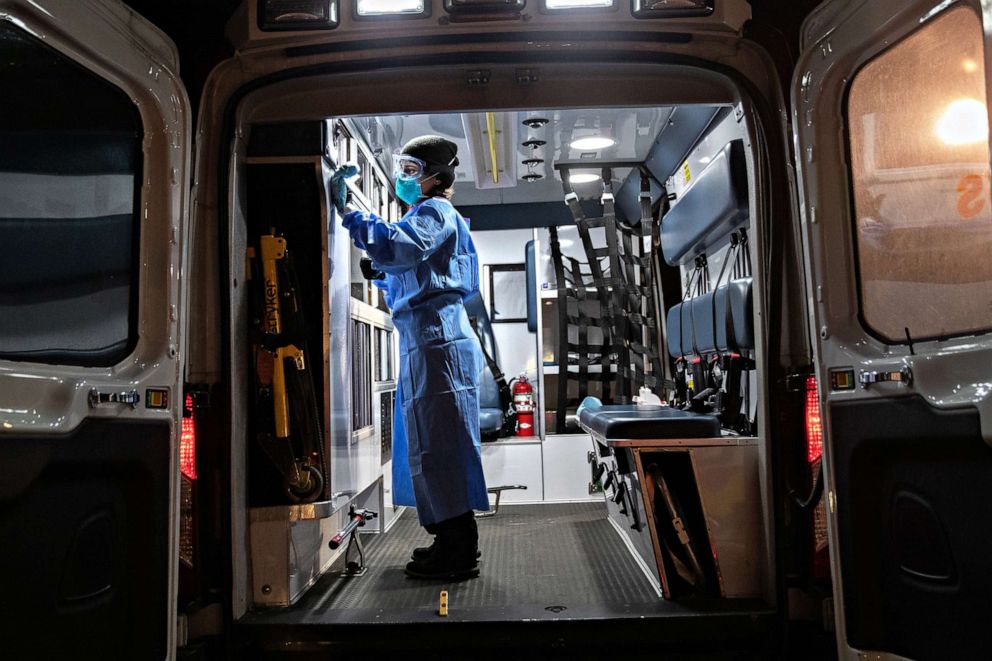Photos: EMS first responders on the front lines of coronavirus pandemic
Photographer John Moore documents EMS crews assisting COVID-19 patients.
The global novel coronavirus pandemic has claimed more than 120,000 lives around the world.
The United States now has more than 600,000 diagnosed cases and suffered at least 25,000 deaths. The death toll in New York, the epicenter of the pandemic in the U.S., has surpassed 10,000.
Since the novel coronavirus hit the U.S., John Moore, a senior staff photographer and special correspondent for Getty Images, has documented several aspects of the crisis. His work has included stories on the impact of the pandemic on undocumented Honduran immigrants, virus testing, families isolating at home, as well as the initial outbreak in Washington state.
Moore was based overseas for 17 years. Since his return to the U.S., his work has primarily focused on immigration and the U.S.-Mexico border. Among his many awards was the World Press photo of the year award in 2019 for his image of a young Honduran girl in tears while her mother is detained by U.S. Border Patrol.
This month the photographer spent time documenting the work of Empress emergency medical services personnel in Westchester County and the Bronx in New York. Empress EMS has 575 EMTs and paramedics treating and transporting patients to hospitals throughout Westchester County and parts of New York City. Moore also photographed the work of EMS workers in Stamford, Connecticut.
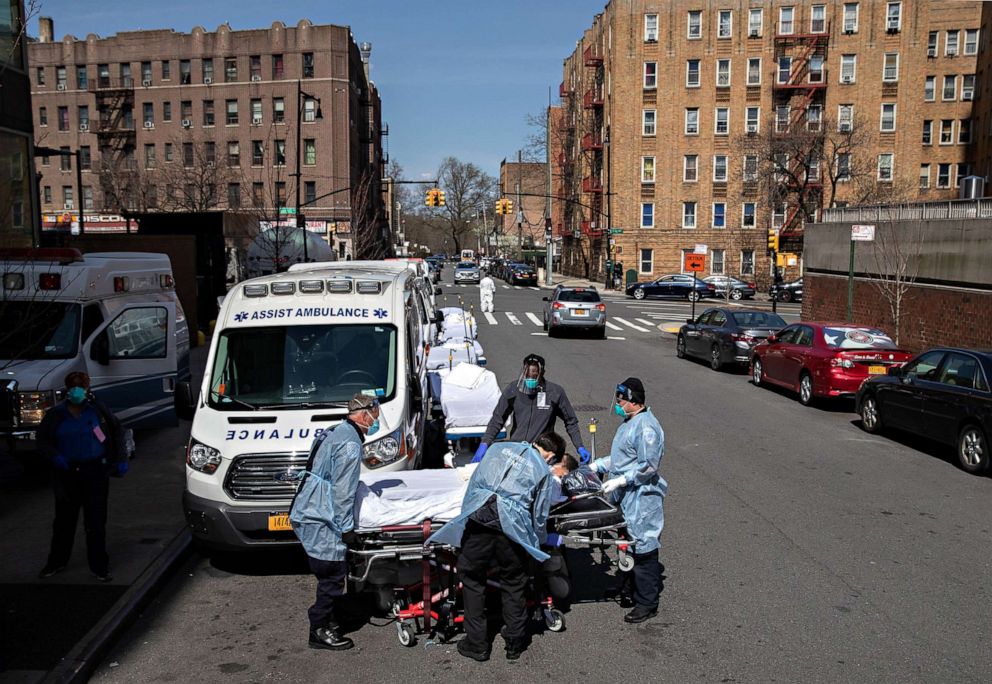
"They are the most front line first responders in this fight against COVID-19. They care deeply about what they do, and that's about saving lives," said Moore.
In 2014, Moore covered the Ebola crisis in Liberia extensively. He described the novel coronavirus as being easier to contract than Ebola and therefore requiring different precautions for himself.
"I never expected the PPE set I used in Liberia would be useful in covering an epidemic where I live, but this pandemic has made us rethink all parts of our lives, both on personal levels and larger ones," he said.
Moore focuses on building relationships and trust with the people he photographs. He "wants families to feel they are part of the coverage." The photographer explained, "More people than not want their story to be told, if it can be done with integrity and respect. Some people are OK with showing their faces and others prefer anonymity." He is sensitive to people's privacy and maintaining their dignity.
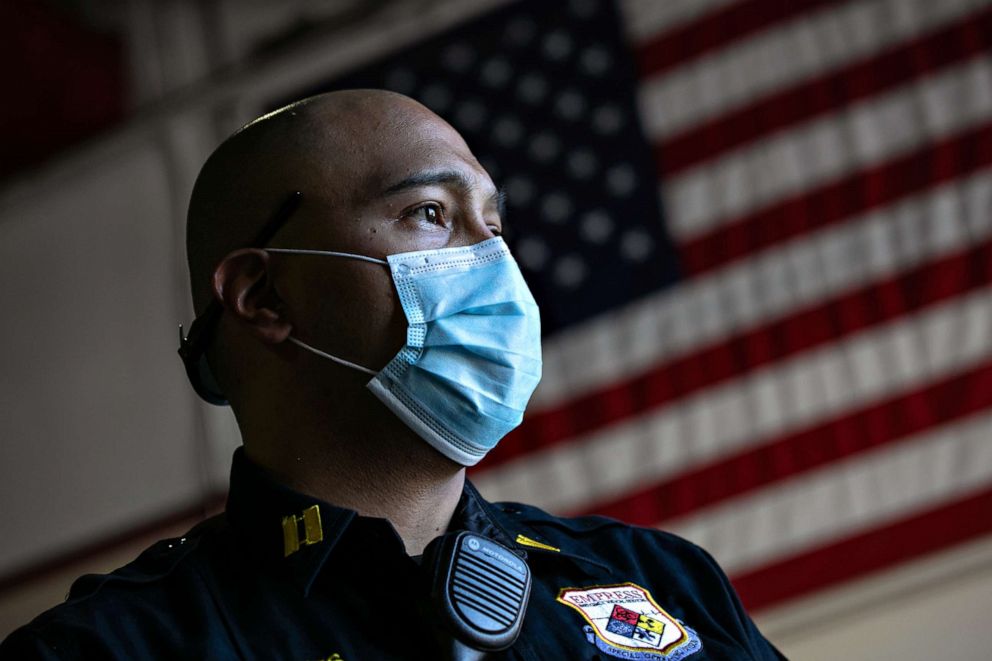
Capt. AJ Briones, in EMS for 12 years, hasn't seen his elderly parents or brother since the beginning of March to keep them safe. He explained that the call volume for Empress EMS had doubled, some days nearly tripled, since the first coronavirus case in Westchester in early March.
"We've trained for this, for infectious disease, for mass casualties," Briones said. "Typically, you don't have them at the same time. It's stressful. It's nothing I've ever seen before." He's proud of the work that they are doing every day.
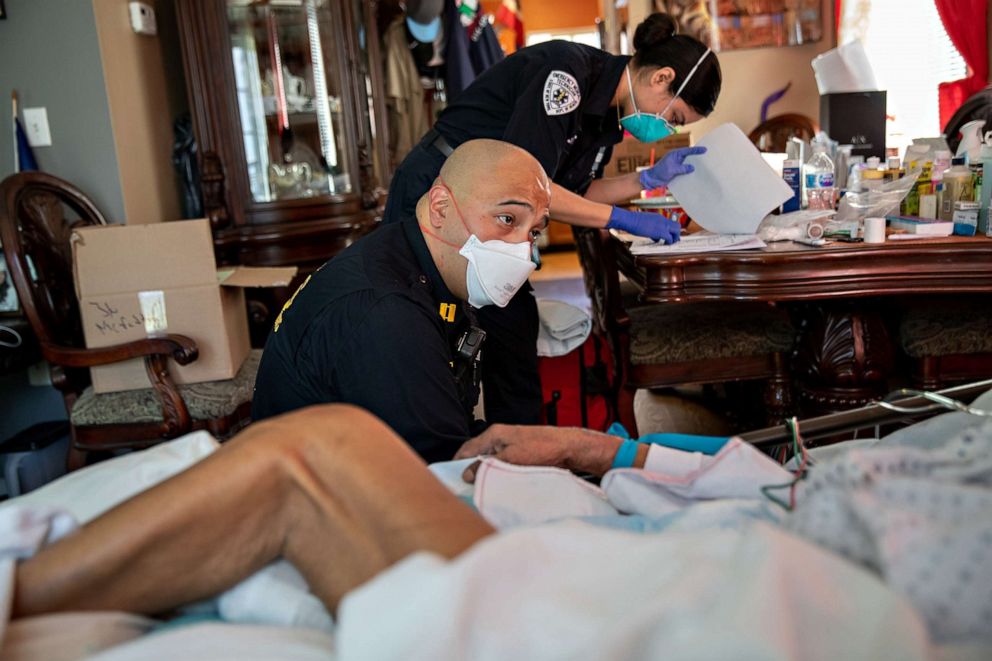
"It was a powerful scene and certainly left an impression on me," Moore said in describing the visit to the home of a gravely ill 92-year-old man.
"The EMS captain, AJ Briones, gave him medication to put him to sleep, then did a rapid sequence intubation (RSI). By knocking him out, they said it would reduce the risk that the man would be coughing during the procedure, considering the virus becomes aerosolized in a cough."
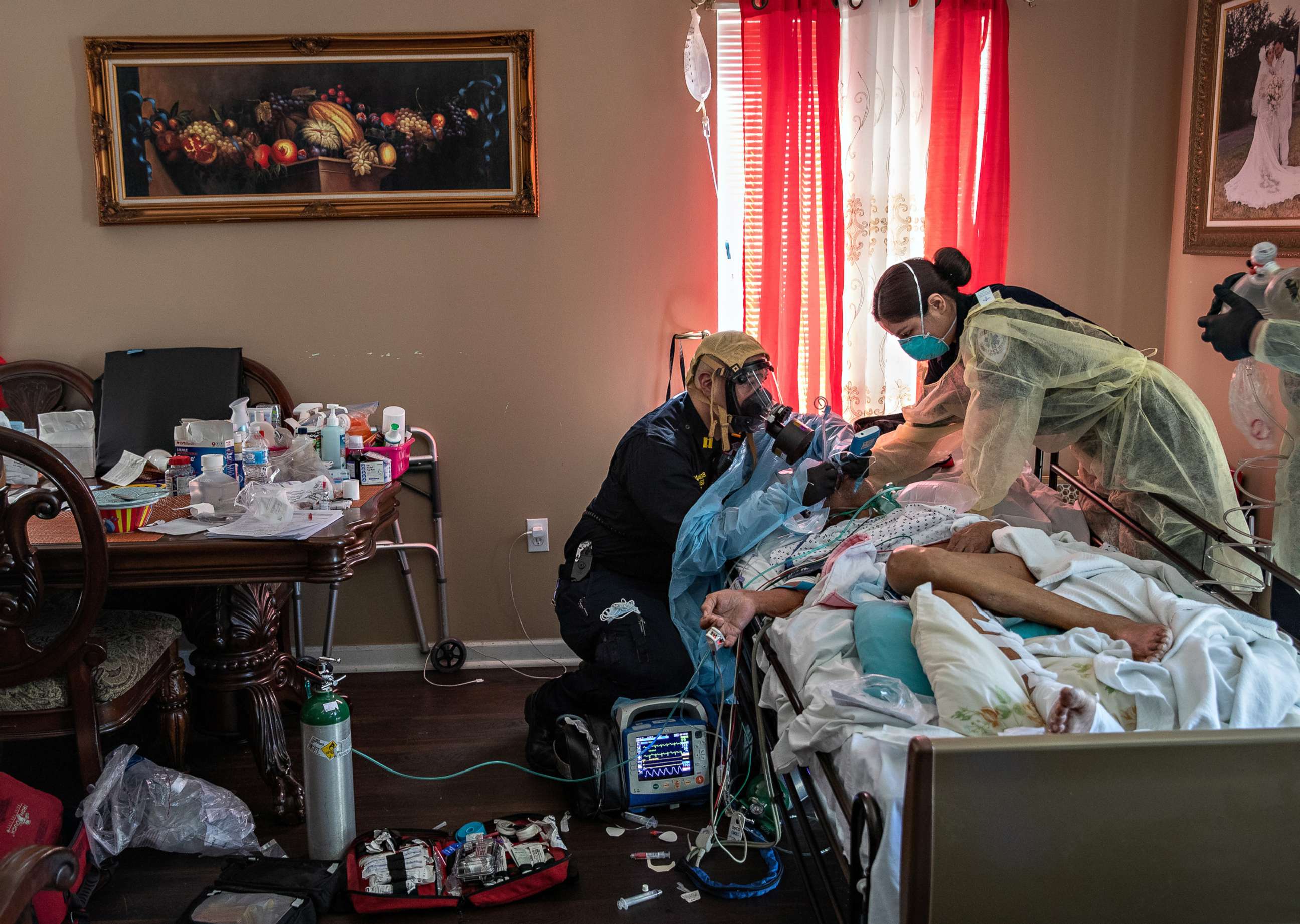
Briones wore additional PPE while performing the intubation in the patient's airway.
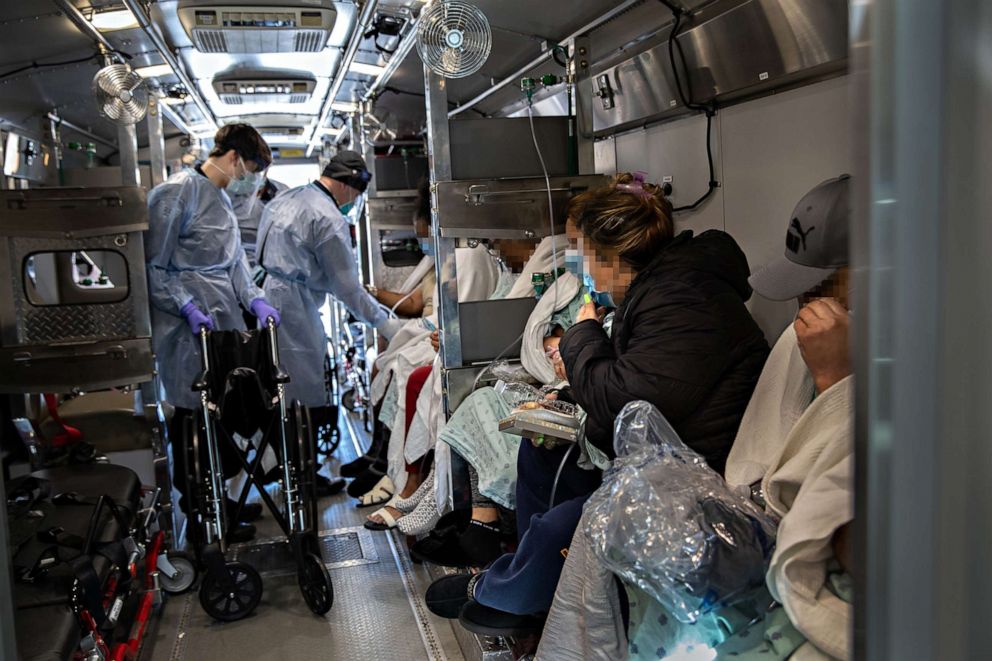
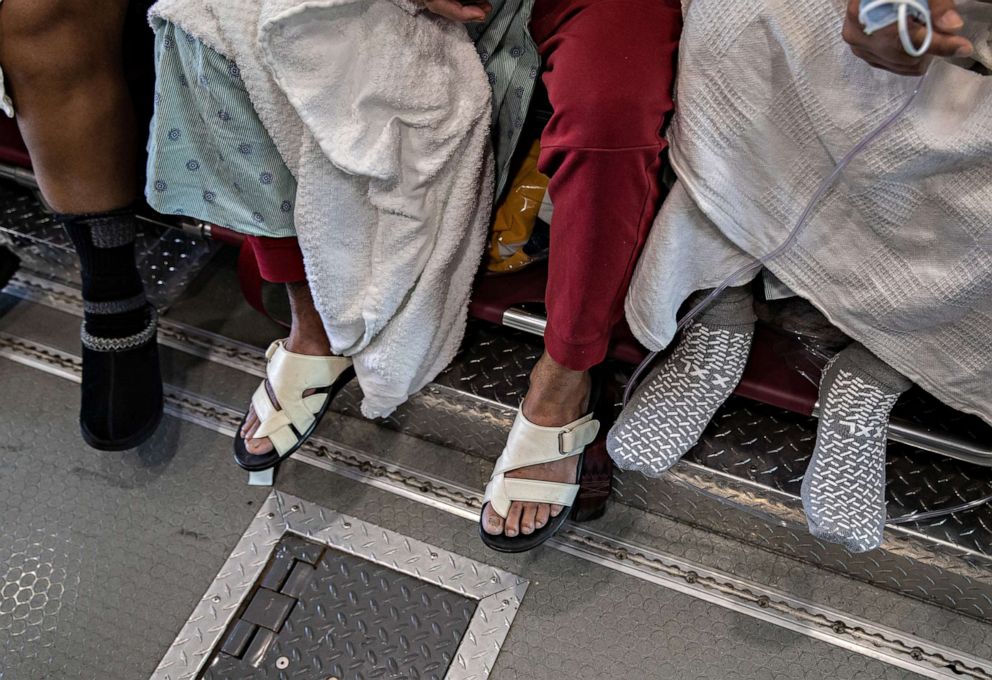
The transfer of coronavirus patients from the Westchester Square campus of Montefiore Medical Center are staffed by Empress EMS, Yonkers police and hospital staff on both ends wearing PPE. A specialized bus known as a medical evacuation transport unit, carries patients on stretchers and benches.
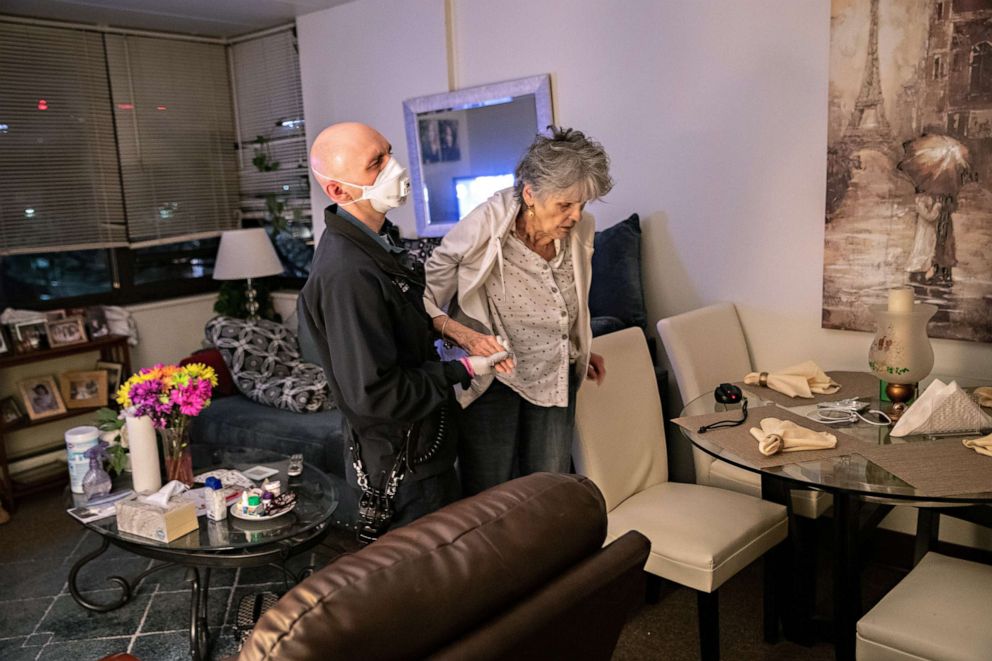
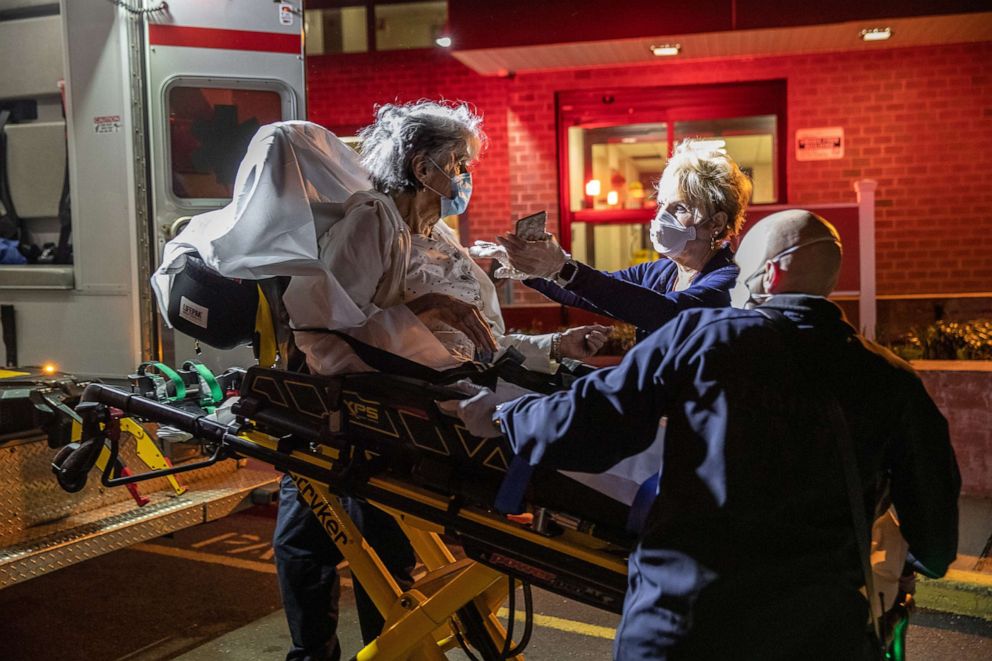
Stamford now has more than 1,000 confirmed coronavirus cases, the highest of any city in Connecticut. The majority of Stamford EMS calls are now for suspected COVID-19 patients.
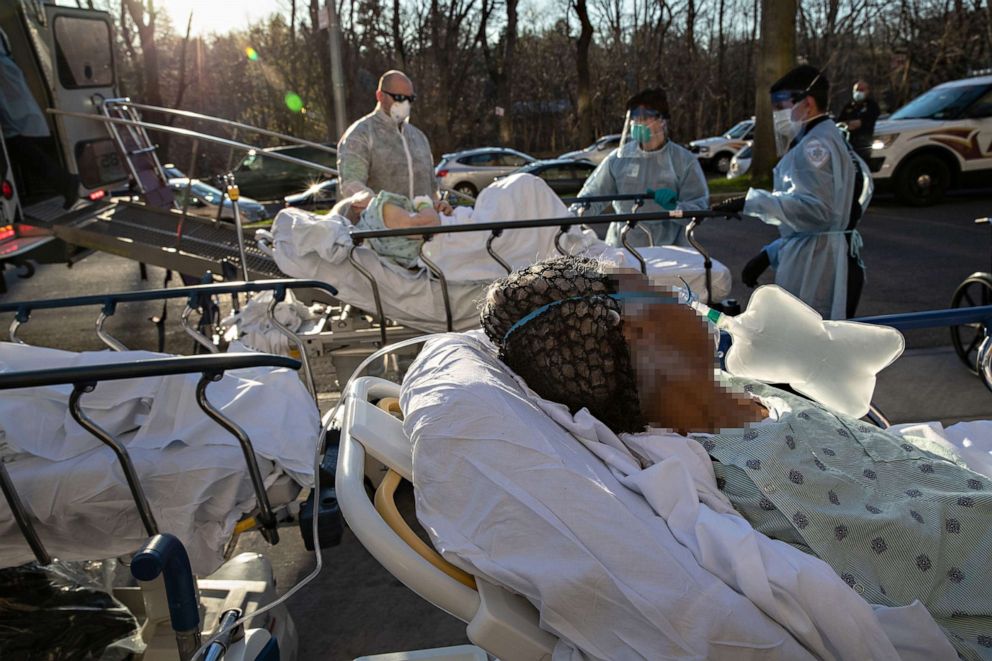
The patient transfers are designed to help overwhelmed hospitals even out case loads in Westchester County and New York City, at the epicenter of the U.S. coronavirus pandemic.
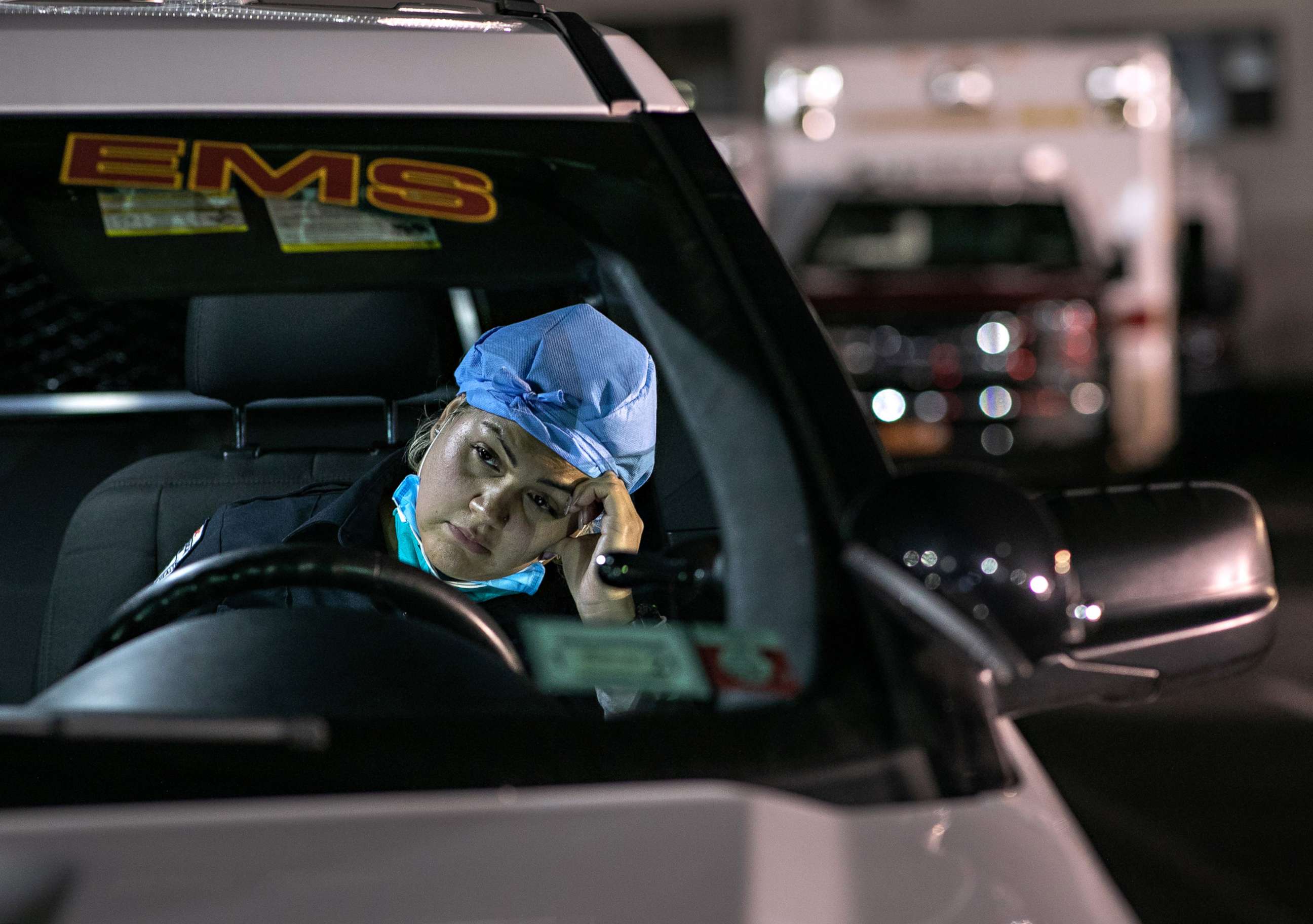
Empress EMS personnel can choose to work eight-, 10-, 12- or 16-hour shifts.
"Our teams are stressed, absolutely," Briones said. He explained the company reaches out to make sure everyone working is OK.
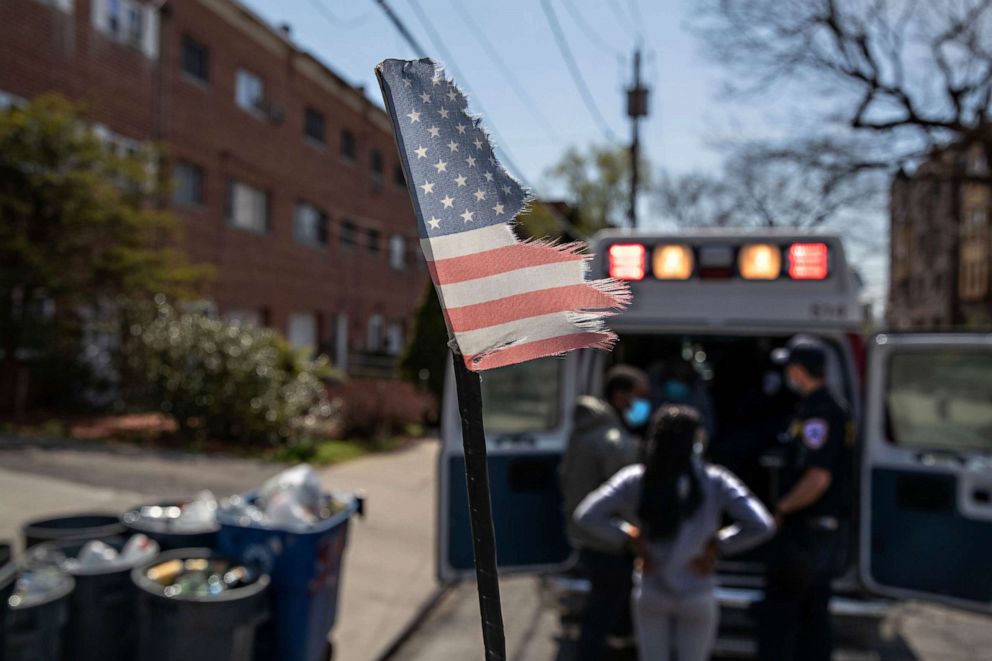
"We are an integral part of that health care wheel," said Briones. "The most important part for us is that we are all in this together."
